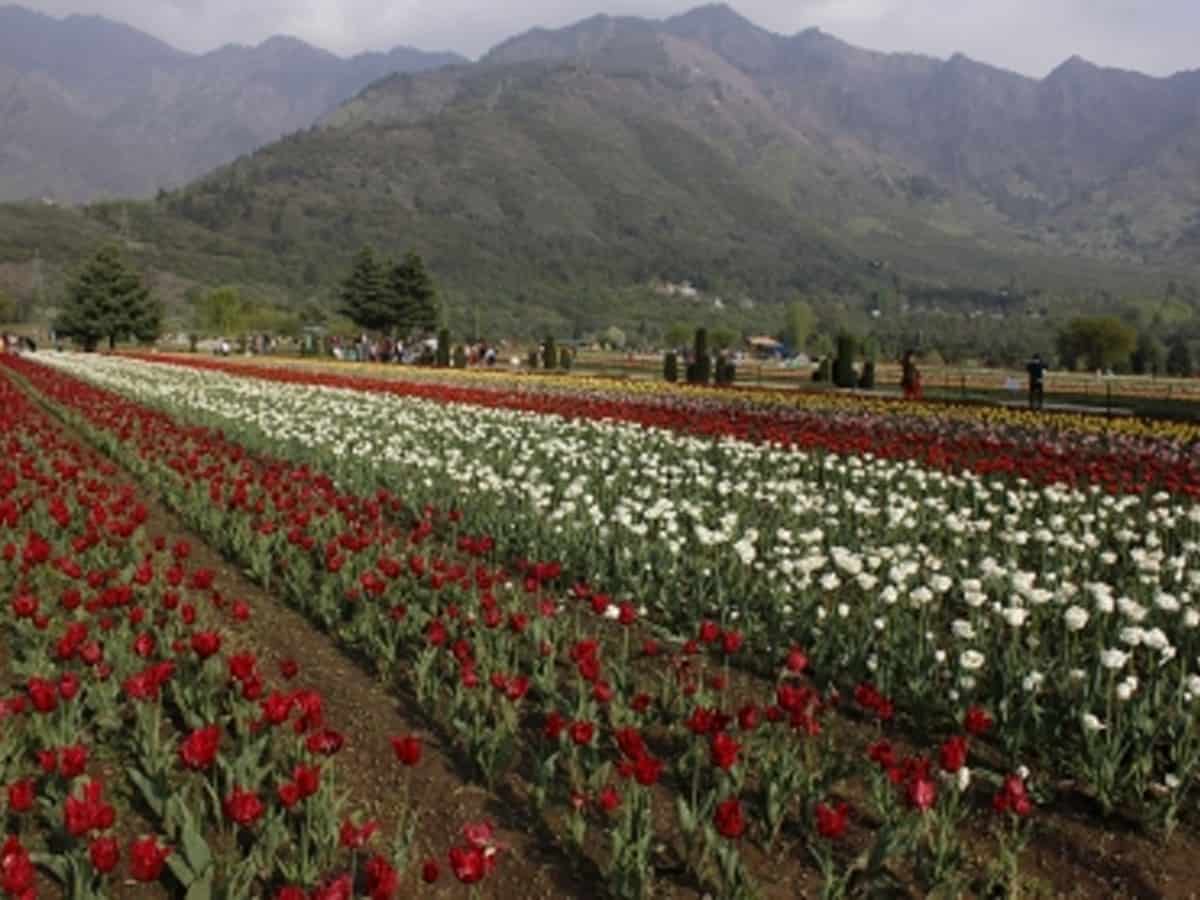
Srinagar: The government’s current campaign to revolutionalise agriculture, horticulture, irrigation system and promote ancillary activities like mushroom, beekeeping, fisheries, dairy, small ruminants, poultry farming and forestry in Jammu and Kashmir (J&K) promises to make it the land of milk and honey.
This campaign was long needed to fully exploit the rich potential of this ‘Paradise on earth’ to keep unemployment and frustration out of it. Well, they say, it is better to be late than never.
Agriculture, horticulture and their allied sectors deserved urgent attention because more than 70 per cent of the workforce is engaged in them and they contribute a great deal to the development of J&K.
In an interview, Additional Chief Secretary (ACS), Agriculture Production Department, Atal Dulloo, said the government is aiming at completely transforming the lives and outlook of farmers in J&K from subsistence to modern agriculture by 2023.
The most difficult but essential part of this campaign is to change the traditional outlook of the farmers about agriculture.
The ACS said the Agriculture Extension Officers were trained to wean farmers from traditional practices in favour of, what he called, agri-preneurship that would ensure high returns and respectable employment.
In J&K the government has been following a slogan “Per drop, more crop” and “Har khet ko paani” (water for each farm). That is to emphasise that the government is giving special attention to creating an irrigation infrastructure.
The farming mechanisation policy of the government seeks among other things to promote hill agriculture and also to link farmers with National Farm Market. Efforts are also being taken to mobilise youth and women into Interest Groups (FIGs) and Farmer Producer Organisations (FPOs) in product-specific clusters to meet the objectives of ‘Atmanirbhar Bharat’.
The government recently constituted an apex committee consisting of notable scientists under the chairmanship of Mangla Rai, the former Director General of the Indian Council of Agriculture Research, to transform the sustenance of agriculture into a sustainable agri-economy through the investment of knowledge, technology, and capital. The committee is drawing the strategic roadmap for the growth and development of J&K’s agriculture landscape.
The Union Territory’s administration has implemented all the centrally-sponsored schemes on the ground in the agriculture sector. Higher-yielding variety seeds are periodically distributed to farmers at nominal costs, along with quality planting material by the Department of Agriculture.
Through awareness programmes, soil health and integrated nutrient management are being given precedence over short-term farming gains like the quantity of crop production. use of soil health cards, promotion and diversification in cropping, farming systems and natural farming is being promoted.
With the greenhouse and nethouse units set up by the government, a farmer now can grow off-season vegetables easily. Social schemes like PM-KISAN, PM Kisan Maan Dhan Yojana and crop insurance schemes are helping farmers to truly be self-reliant.
When we talk of changing farmers’ outlook we cannot ignore the pre-condition of school and adult education. What J&K require is a multi-purpose agriculture university — perhaps affiliated with Pusa Institute in New Delhi or any known agriculture university in India.
Multi-purpose means that the proposed university should also give hands-on training in marketing, accountancy, salesmanship and rudimentary knowledge of laws and packing.
These subjects cannot be dismissed as irrelevant to an agriculture university because J&K has plenty of natural gifts. It produces 70 per cent of India’s apples. It is virtually the only region that produces walnuts. 90 per cent of trout, a freshwater fish is a delicacy that comes from J&K.
Jammu is famous for its rajma (kidney beans), basmati rice, Kala Zeera (black cumin), and apricots. J&K’s sheep are the best in the country. ACS Dulloo talked about plans to import new breeds of sheep from New Zealand. The Union Territory’s silk and wool have high quality.
He said the government has fixed targets to double the contribution of Agri-GDP in the next five years from $4 billion to $8 billion.
In Dulloo’s view, horticulture can change the overall story of J&K. The latest efforts, among other things, include the establishment of walnut nurseries to strengthen the existing ones.
The government has allocated Rs 646 crore for the horticulture sector in this year’s budget. This is in addition to the Rs 2,835 crore allocated for agriculture. For the development of the dairy and sheep sector Rs 392 crore has been allocated, Dulloo said quoting Lieutenant Governor Manoj Sinha.
This means in this year’s budget the government has allocated a total of Rs 3,873 crore for agriculture, horticulture, and dairy and sheep to effect a change for the better in the lives of farmers in J&K, the ACS added.
